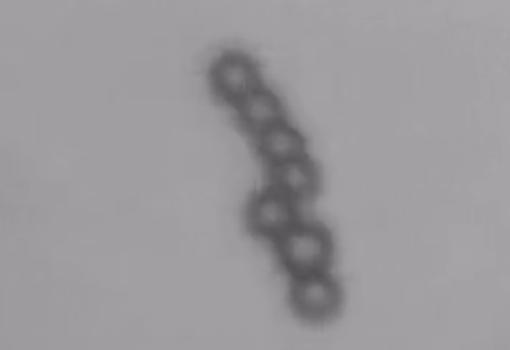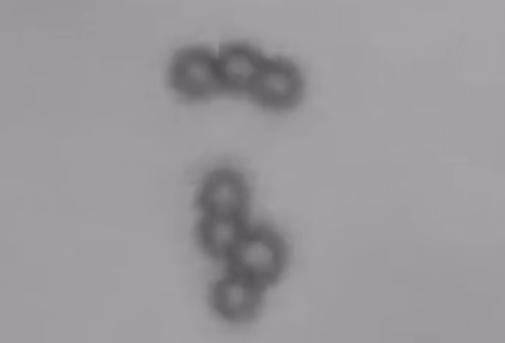Swimming microbots detach and rejoin via magnets, could perform future surgeries
Using robots in the medical field is not a new concept. More and more we see robot variations implemented in some capacity – whether assistance-related, research-conducting, or even surgery-performing — robots are now a staple of the medical field.
Now a team of engineers from Drexel University have figured out how to implement tiny chain-like robots into drug delivery and surgical applications. The researchers, led by MinJun Kim, PhD, a professor in the College of Engineering used a rotating magnetic field to show how multiple chains of microscopic magnetic bead-based robots can link up to reach impressive speeds swimming in a microfluidic environment.
This breakthrough is a major step toward the full development of “microswimmers,” which are being created to deliver medicine and perform surgery inside the body.
The robot beads were able to magnetically link and un-link while swimming, and the team could individually control the smaller decoupled robots in a magnetic field. The data helps further the concept of using microrobots for targeted, intravenous drug delivery, surgery and cancer treatment.

“We believe microswimmer robots could one day be used to carry out medical procedures and deliver more direct treatments to affected areas inside the body,” said U Kei Cheang, PhD, a postdoctoral research fellow in Drexel’s College of Engineering and lead author of the paper. “They can be highly effective for these jobs because they’re able to navigate in many different biological environments, such as the blood stream and the microenvironment inside a tumor.”
As it turns out, the longer chains of bots couold actually swim faster than the shorter ones. The longest chain examined by the group, which was 13 beads in length, reached a speed of 17.85 microns/second.
Drexel engineers envision a robotic chain capable of traveling inside the body that can decouple to deliver the medicinal payload or targeted treatment.
Their approach allows a versatile robot to perform multiple tasks while being controlled by a single magnetic field.
The robot chains move by spinning, so the faster the field rotates, the more the robots spin and the faster they move. This dynamic propulsion system is also an important factor in getting them to divide into shorter segments. At a certain rate of rotation the robotic chain will split into two smaller chains that can move independently of each other.

“To disassemble the microswimmer we simply increased the rotation frequency,” said Cheang. “For a seven-bead microswimmer, we showed that by upping the frequency 10-15 cycles the hydrodynamic stress on the swimmer physically deformed it by creating a twisting effect which lead to disassembly into a three-bead and four-bead swimmer.”
Once separate, the field can be adjusted to manipulate the three and four-bead robots to move in different directions. Because the beads are magnetized, they can be reconnected just by tweaking the field to bring them back into contact on the side with the corresponding magnetic charge.
All of this work is part of a larger project including Drexel and 10 other medical research institutions from around the world to develop this technology to perform minimally invasive surgery on blocked arteries.
According to the team:
“For applications of drug delivery and minimally invasive surgery, future work remains to demonstrate the different assembled configurations can achieve navigation through various in vivo environments, and can be constructed to accomplish different tasks during operative procedures. But we believe that the mechanistic insight into the assembly process we discussed in this research will greatly aid future efforts at developing configurations capable of achieving these crucial abilities.”

Comments are closed, but trackbacks and pingbacks are open.